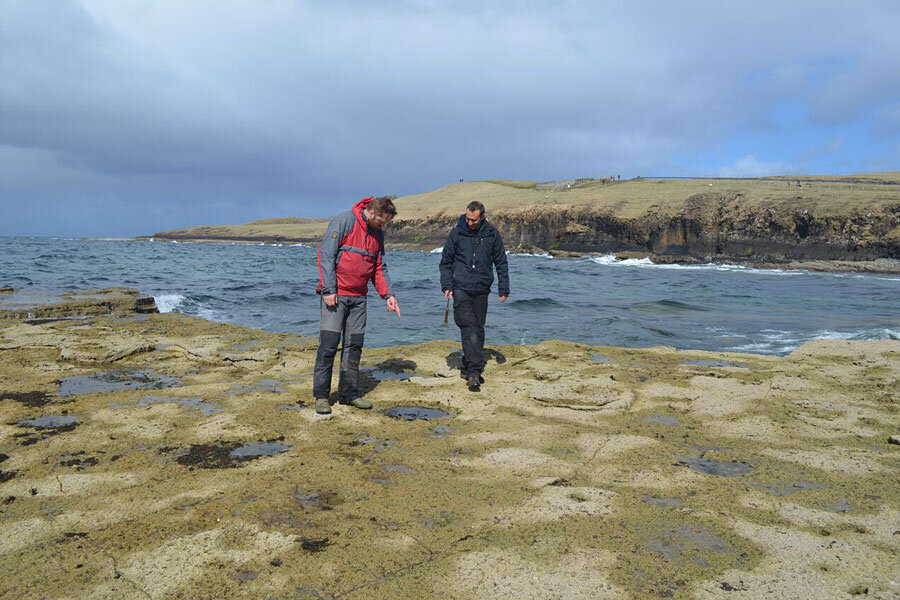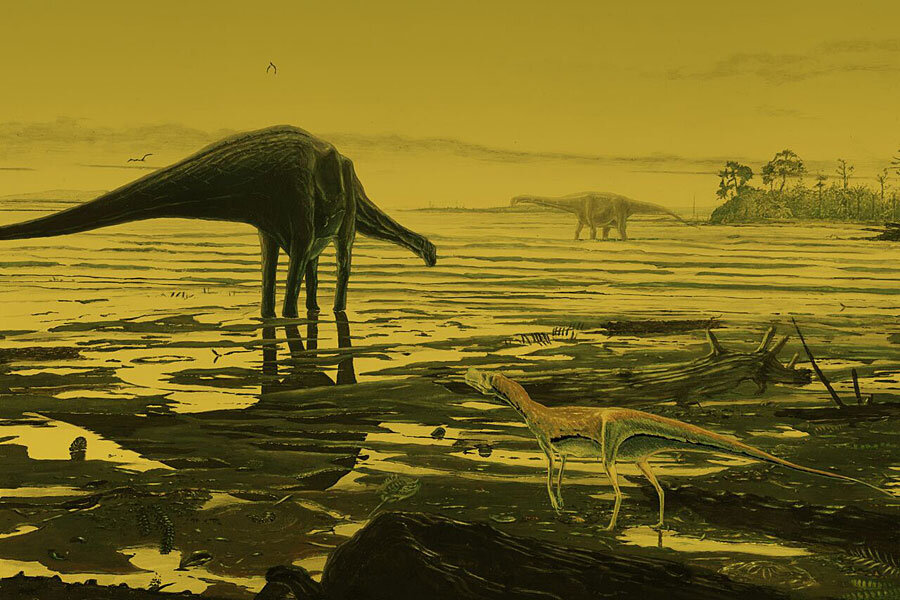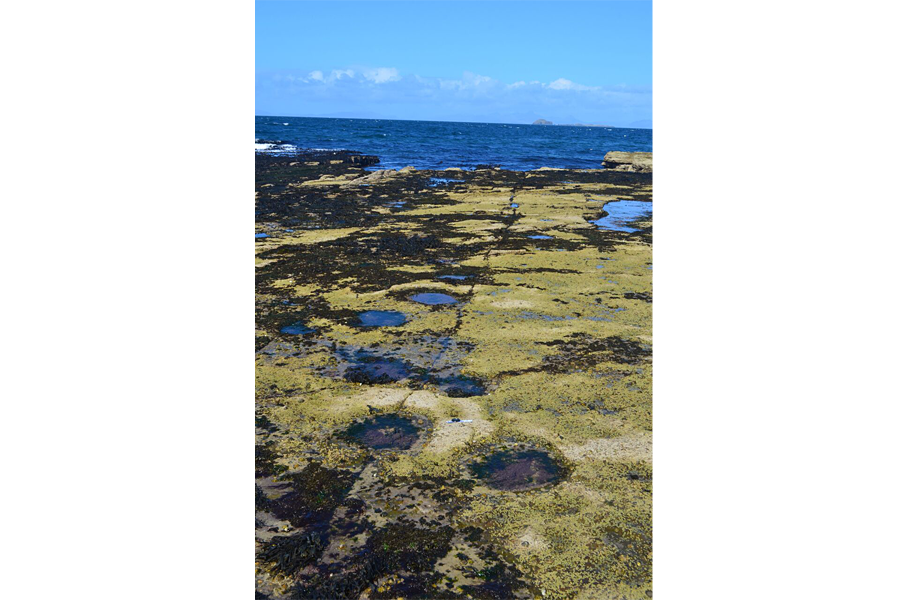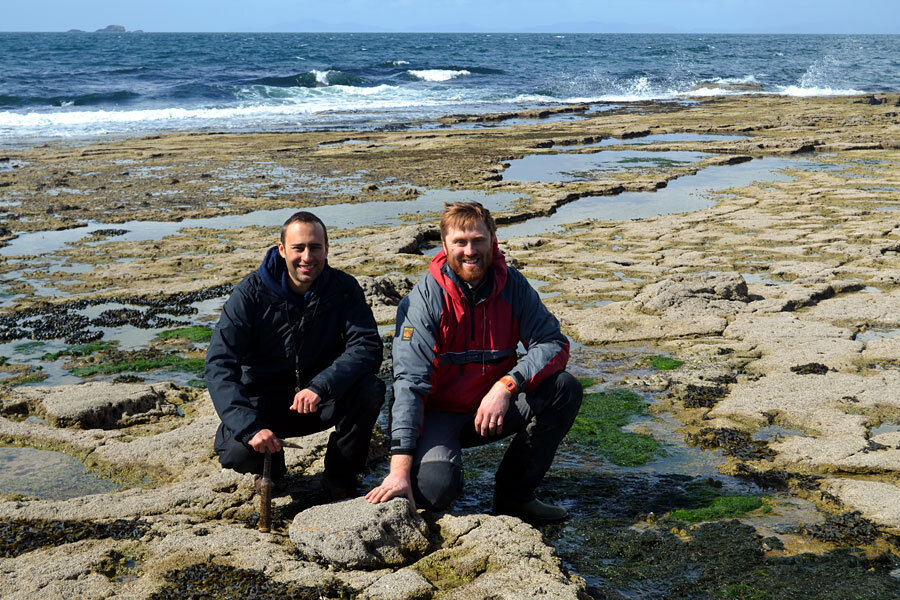Was there a ‘dinosaur disco’ 170 million years ago in a Scottish lagoon?
Loading...
Some 170 million years ago humongous dinosaurs walked through a lagoon, but their splashy stroll stayed in the past until recently.
Scientists spotted the footprints of these dinosaurs preserved in layers of rock on the Isle of Skye, according to a new paper.
In the Middle Jurassic period, generations of sauropods, huge, long-necked, pot-bellied dinosaurs, walked through a shallow salt water lagoon that is now the rocky northeastern tip of the Scottish island.
Today, "There are so many tracks crossing each other that it looks like a dinosaur disco preserved in stone," study author Steve Brusatte said in a news release.
The extensive new dinosaur track site is the biggest dinosaur site in Scotland, the scientists say. They describe the new site in a paper published Tuesday in the Scottish Journal of Geology.
If you went out to this new site on the Isle of Skye today, it would probably be rainy, windy and cold. “But 170 million years ago, it was quite different,” Dr. Brusatte tells The Christian Science Monitor in an interview.
“It was a lot warmer, it was a bit closer to the equator. It was also part of an island back then,” Brusatte says. But sea levels would have been different at the time, so the island would have looked very different.
Big rivers flowed across the land, emptying into a deep ocean, he says. Lagoons, like the one these sauropods walked through, would have been found along the shore.
Some of these lagoons were freshwater, some were salty. Many different animals called the ancient island home. Various dinosaurs, crocodiles, mammals, and lizards lived there.
Among those animals were the plant-eating sauropods that left the footprints Brusatte and his colleagues found. These sauropods were primitive cousins of the more famous Brontosaurus and Diplodocus.
“It’s hard to tell exactly how big these dinosaurs were just from the footprint,” Brusatte says. But the scientists estimate that the dinosaurs could grow as long as 50 feet and likely weighed 15 to 20 tons. That’s some 33,000 to 44,000 pounds. To put that size in perspective, the largest elephant on record, an adult male African elephant, weighed some 24,000 pounds.
“They were big animals,” Brusatte says of the sauropods. "These were the biggest things that ever lived on land."
“These dinosaurs were walking in the water, wading in the shallow water when they made the tracks,” Brusatte says.
“We’re so used to thinking of these dinosaurs as these purely land-dwelling behemoths,” Brusatte says. There have been other sites found across the world that have shown these dinosaurs living in or near shallow water environments, he says, “but the Scottish one is really good.”
“It’s really slam-dunk evidence that these dinosaurs were living in this environment,” Brusatte says. Three layers of the geology at this new site hold dinosaur footprints.
The scientists found the dinosaur tracks by happenstance. They had gone to the site looking for other fossils.
“This was a place where a geologist, a friend of ours, had found a little crocodile jaw fossil,” Brusatte explains. “We wanted to see if there were any more out there, so we went up to that site.”
“We spent a lot of the day collecting small fossils, fishbones and shark teeth” among other items, he says. But it began getting late and dark. “The tide was coming in,” Brusatte says. “It was time to go back.”
“When we started walking back to our vehicles, I was walking back with one of my colleagues, and we noticed this big depression in the rock. It kind of looked like a pothole. And then we noticed another one, and another one in this zig-zag pattern,” he recalls.
“It dawned on us pretty quickly that we had seen similar things before, not in Scotland but in other parts of the world,” Brusatte says. “These were the footprints, and the handprints, of these huge long-neck dinosaurs.”
“We were lucky, in a sense, because other people had been to the site, other geologists,” he says. But tides often obscure the spot. The site is only fully exposed a few hours a day, Brusatte says. And, he adds, “a lot of the year it’s covered in seaweed, it’s covered in sand after a storm.”
“We were there at a time when the tracks were exposed,” he says. “They were really just sitting out there waiting for us to find them.”









